
A talk to be given at Beeding & Bramber Local History Society by Kevin Gordon. At Beeding & Bramber Village Hall, High Street, Upper Beeding at 7.45pm on Wednesday 2nd April.
Category Archives: Local History
Small Dole Auxiliary Unit Patrol
Auxiliary Units were a secret resistance network of highly trained volunteers prepared to be Britain’s last ditch line of defence during World War Two. They operated in a network of cells from hidden underground bases around the UK. [CART]
There’s now a page of information about the Small Dole Auxiliary Unit Patrol on the CART website. The Sussex Regional Headquarters was at Tottington Manor. Volunteers in Sussex, as elsewhere, were mostly local farmers. If you have any information about the Small Dole unit, or its members, please contact CART. If you have never previously heard of the ‘Auxiliary Units’ but think they sound interesting, then the book to read is Stewart Angell’s (1996) The Secret Sussex Resistance, 1940-1944, Midhurst: Middleton Press (readily available).
Mapping the woods [update]

A regular aerial photo compared with a LiDAR image of the same area. The latter reveals archaeological features that are hidden in the former.
A special plane equipped with cutting edge technology is being used next week to search for the lost archaeology hidden under the South Downs National Park’s ancient woodland. While the South Downs are famous for Iron and Bronze Age monuments such as Cissbury Ring and Winchester Hill, a large part of the central areas of the national park lie under forests or woodland and almost nothing is known about their ancient history. The Piper Chieftain survey aircraft will be using airborne laser technology (commonly known as LiDAR) to map the ground underneath 30,000ha of woodland between the river Arun and the A3.
Rebecca Bennett said: “It’s a unique opportunity to unlock the secrets underneath these ancient woods. There are a few archive aerial photographs of this area capturing a tantalising glimpse of features revealed by felling during the second world war, but there is so much we don’t know about the history of the people who lived here.”
Our earlier post on this project is here.
Measure twice, cut once

Steyning Grammar will be celebrating 400 years of existence in May with a variety of events including:
- 24th May: the opening of the Church Street School and grounds to the public with archive material relating to the school’s history on display;
- 24th-25th May: three performances each day of ‘Carvings, Corridors and Timbres’, a musical about the school, at the Church Street site;
- 26th–28th May: a heritage quilt will be on display in the Church of St Andrew and St Cuthman;
- 29th May: Janet Pennington will give a talk on ‘Steyning Grammar School, 400 Years of Education’ at 2:00pm in Bolton House;
- 7th March–31st August 2014: an exhibition titled ‘The Scholar’s Tale — 400 Years of Schooling in Steyning’ at Steyning Museum.
Further details about these and other events can be found here.
Bramber unbumped
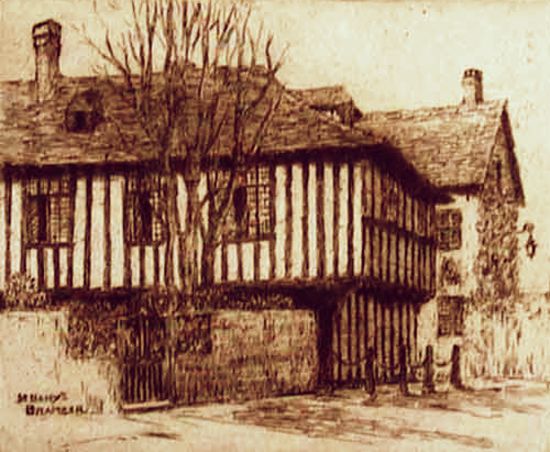
The West Sussex County Times (print edition, February 13th) is reporting that West Sussex County Council has finally agreed to remove all of the speed bumps that have been causing damage to three of Bramber’s oldest houses: Yew Tree Cottage, The Gables and St. Mary’s House (shown above). The campaign by residents against the bumps has lasted for over twenty years.
Steyning Grammar: the history book
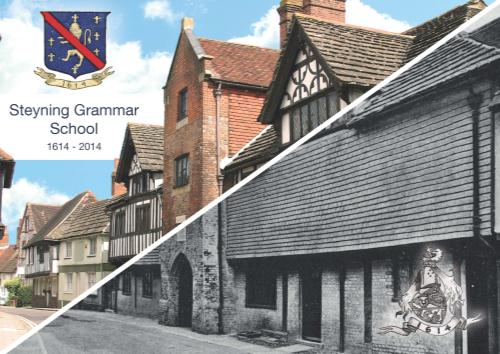
Steyning Grammar School 1614-2014, a book authored by Caroline Meeson and others to commemorate the 400th anniversary of the school’s founding, is now available. The book is on sale from the main school reception, Steyning Bookshop and Steyning Museum. It costs £12.
3000 years in 3 hours
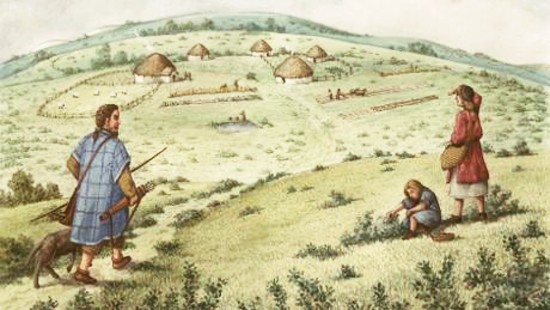
Saddlescombe Farm, Sunday 23 February 2014, 10:00am — 1:00pm, all tickets £3.00, children and dogs on leads welcome, slightly challenging walk, advance booking not needed.
An opportunity to discover an ancient downland farm and its surroundings. Saddlescombe Farm has seen over 1000 years of history and still retains many of its old buildings, including the donkey well and 17th century barn. The surrounding downland holds even greater allure with over 3000 years of stories to tell.
More information: Graham Wellfare, 01273 857712, graham.wellfare@nationaltrust.org.uk
The Archaeology of Neanderthals in Sussex

A talk to be given at Beeding & Bramber Local History Society by Dr. Matthew Pope of University College London. At Beeding & Bramber Village Hall, High Street, Upper Beeding at 7.45pm on Wednesday 5th February.
The history of Saddlescombe
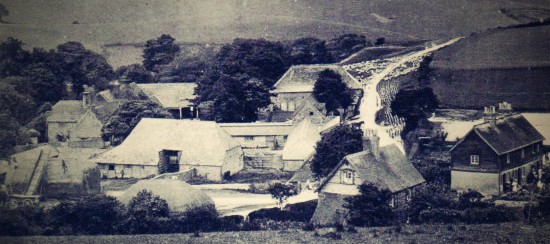
Thanks to the efforts of Janet Kennish and Graham Wellfare, the National Trust webpages for Saddlescombe have recently been enhanced with a lot of interesting new material:
- Saxons and Normans
- The Knights Templar
- The farm: 1600-1850
- A Quaker family farm
- The twentieth century
[Note added in December 2018: as is their custom, the inexcusably awful National Trust website has now changed or removed all the URLs linked above. The material is probably still there but you will need to search for it.]
Wolstonbury in winter
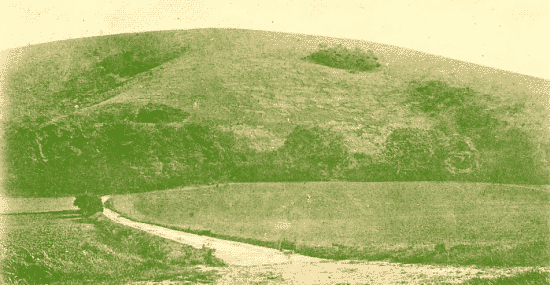
A guided walk exploring the woods and ancient downland of one of the most remarkable hills on the South Downs. Here you will discover ancient beech trees, a mysterious history and a bizarre lunar landscape created by billions of ants.
Booking not needed. Sunday, 19th January 2014, 10:00am — 1:00pm, all tickets £3 , more info here.

